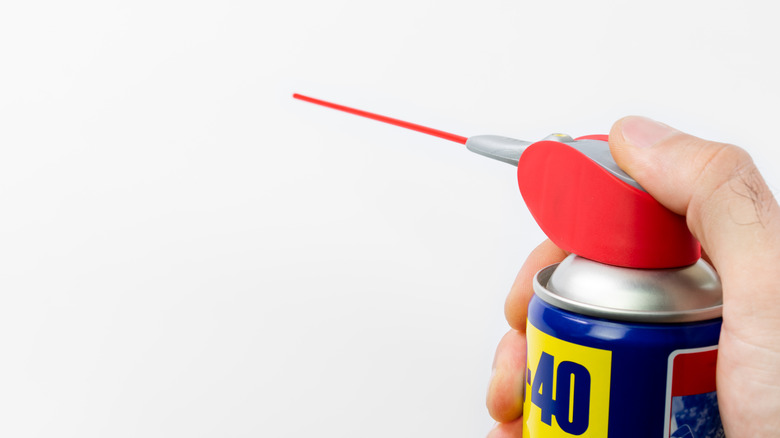Can WD-40 Fix A Stuck Car Window? Here's What You Need To Know
We may receive a commission on purchases made from links.
WD-40, the go-to degreaser for consumers around the world. Whether you have a squeaky door hinge or some unexpected uses for WD-40, like getting a large snake away from your car, it can get you out of sticky situations.
Besides snakes, of course, many things can go wrong with your car. The car's battery can die, you can get a flat tire, the transmission might go — and then there's wear and tear on the windows. Not only do they wear out, but the tracks can accumulate dirt and grime, greatly inhibiting their functionality. You don't realize how much you take advantage of a window until you can't roll one down anymore.
Grease buildup in the track of a window is really the only issue WD-40 is going to help you with here. If there's another problem, you need to take your car in to be looked at. If you're sure it's a matter of dirt and grime building up, though, arm yourself with that little blue and gold can of multi-use spray and get to work, because it's going to help you keep your car in tip-top shape. Not only will the WD-40 lubricate the window tracks and break down the buildup, ensuring your windows work like new, you don't have to limit what you do with your car afterward. It's waterproof, so rain isn't going to wash away the degreaser and reverse the job it did.
Make sure the WD-40 gets on the tracks
While there are a few things WD-40 shouldn't be used on, it should have no problem clearing out the grime that's keeping a car window from rolling up and down. Not only that, it will help prevent further accumulation of dirt and keep it safe from rust and other impurities.
- First, make sure you have the WD-40 Multi-Use Product.
- Make sure you connect a thin nozzle to the can to be more precise while spraying. Spray the liquid into the window's tracks. You don't need a lot of spray — just a few sprays will suffice.
- Don't do anything right away. Let the liquid settle for a few minutes while it does its job.
- Once the WD-40 has had time to work, go ahead and test the windows. If they don't function as intended, repeat the process.
If multiple attempts don't fix the issue, it might be time to take the car into the shop or call a professional. Remember, WD-40 isn't going to fix any issue with your windows other than some grease buildup. From blown fuses or voltage issues with a window's switch to a failed motor or something as simple as the child safety lock being engaged, any number of issues can prevent car windows from working. Ensure you know the problem before you attempt this method.

